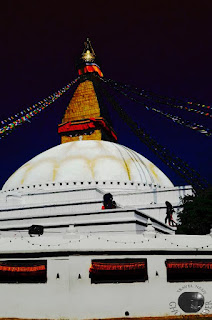is a 5-Roof (Ngata "ङाता" = 5 Stories "तल्ला and Pola "पोलँ" = Roof "छाना"). Importance is Five Stories Roofed Temple. Pagoda Style sanctuary situated in Bhaktapur, Nepal. The sanctuary was raised by Nepali King Bhupatindra Malla amid a 7-month time frame from late 1701 into 1702. It is the sanctuary of Siddhi Lakshmi, the Tantric Lakshmi who offers promise
Bhaktapur is one of the three urban communities found in the Kathmandu Valley in Nepal not a long way from the capital city of Kathmandu. The name Bhaktapur signifies "City of Devotees". Today this old, medieval city, from the fifteenth century, is a piece of the UNESCO World Heritage site, which records structures that are of social and regular esteem all around.
It was constructed just in 17 months from the time it began. Lord Bhupatindra Malla`s account book express that it was worked in just 7 months by the assistance of different neighbors like Challing, Jitpur, Bagshowari, Shakhu, Jhaukhel, Changu, Gokarna, Paunati, and so forth. His kingdom had terrible relations with neighbors toward the west like Kritipur and Kantipur. So to demonstrate to them that he is additionally effective, he assembled it. It was worked in a period when the Taj Mahal was under development. He additionally expressed that he had constructed 7 block production line for blocks and every single crude material were acquired progress. The greatest test was to bring a gigantic stone from challing which is very nearly 9 km from the sanctuary. Finally, he requires the devour to all subject and neighbors lords to appear. In that devour, around 23,000 individuals were there; which was the 4times of a resident of Bhaktapur. It was composed in a thick book which was found by Dr. Madan Lal Vaidya.
One of the sanctuaries that are still in presence today is the Nyatapola Temple, which was worked in 1702 A.D. under the administer of King Bhupatindra Malla. This wonderfully designed building is viewed as one of the tallest pagodas in the nation and is a stunning case of the tremendous workmanship that went into structures of this sort. This five-story sanctuary with a five-level rooftop that stands a little more than thirty meters high can be come to by strolling up a flight of steps that prompts the highest point of the stage. As you stroll up these patios you will see that there are statues on either side of you, on each progression.










